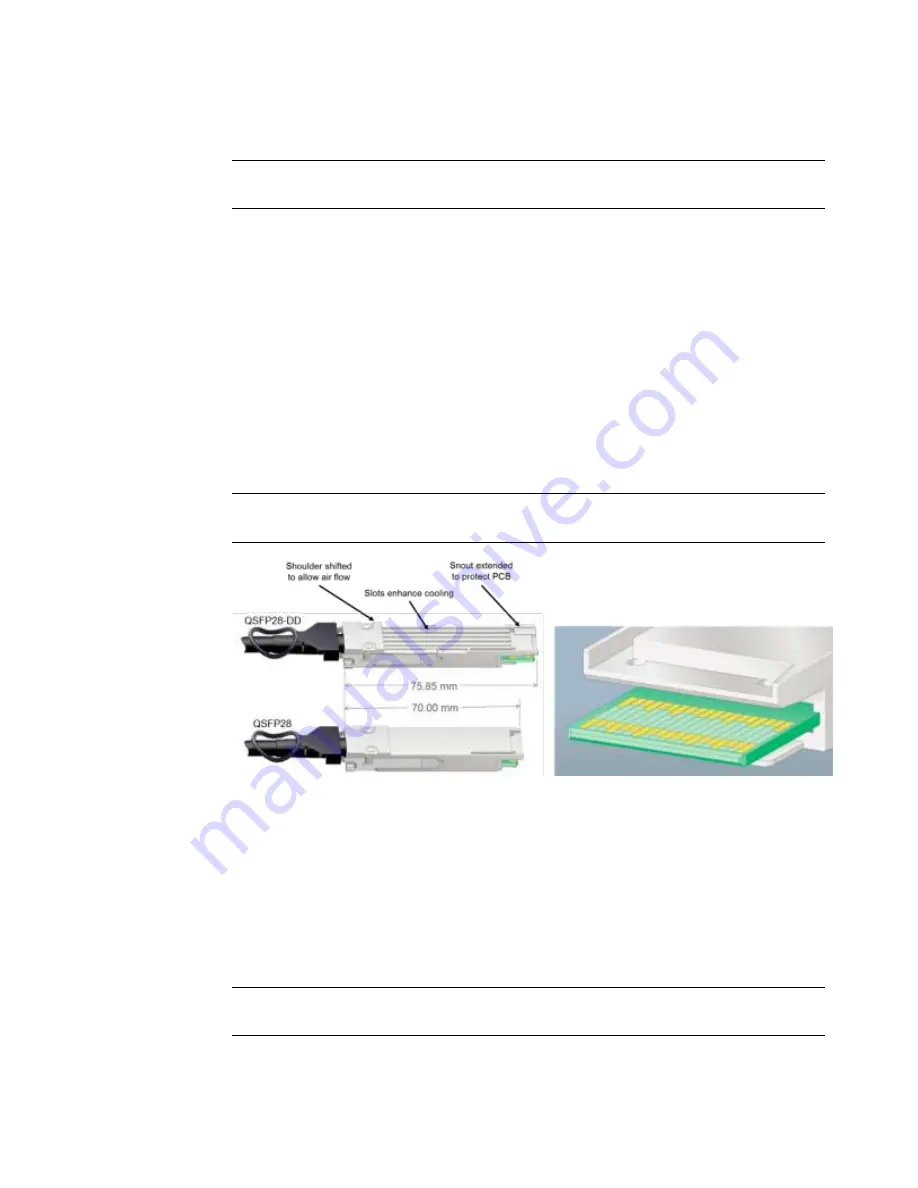
Chapter 3: PowerEdge MX Scalable Fabric Architecture
28
Dell EMC PowerEdge MX
Networking Architecture Guide
▪
For chassis 3 through 10, that only contain MX7116n FEMs, they must connect
to the MX9116n FSE that is in the same slot and in the same MCM chassis
group.
Note
: For information about the recommended MX9116n FSE port connectivity order, see
QSFP28 double density connectors
A key technology that enables the Scalable Fabric Architecture is the QSFP28 double-
density (DD) connector. The QSFP28-DD form factor expands on the QSFP28 pluggable
form factor by doubling the number of available lanes from four to eight, with each lane
operating at 25 GbE, the result is 200 GbE for each connection.
Figure 23 shows that the QSFP28-DD connector is slightly longer than the QSFP28
connector. This is to enable for the second row of pads that carry the additional four 25
GbE lanes. This allows the form factor of a single QSFP28-DD port to present as two
QSFP28 logical ports.
Note:
A 100GbE QSFP28 optic can be inserted into a QSFP28-DD port resulting in 100GbE of
available bandwidth. The other 100GbE will not be available.
Figure 23. QSFP28-DD and QSFP28 physical interfaces
QSFP28-DD cables and optics build on the current QSFP28 naming convention. For
example, the current 100GbE short range transceiver has the following description:
•
Q28-100G-SR4: Dell Networking Transceiver, 100GbE QSFP28, SR4, MPO12,
MMF
The equivalent QSFP28-DD description is easily identifiable:
•
Q28DD-200G-2SR4: Dell Networking Transceiver, 2x100GbE QSFP28-DD, 2SR4,
MPO12-DD, MMF
Note
: See Appendix A for more information about the various media types and their use in the
PowerEdge MX7000.





































